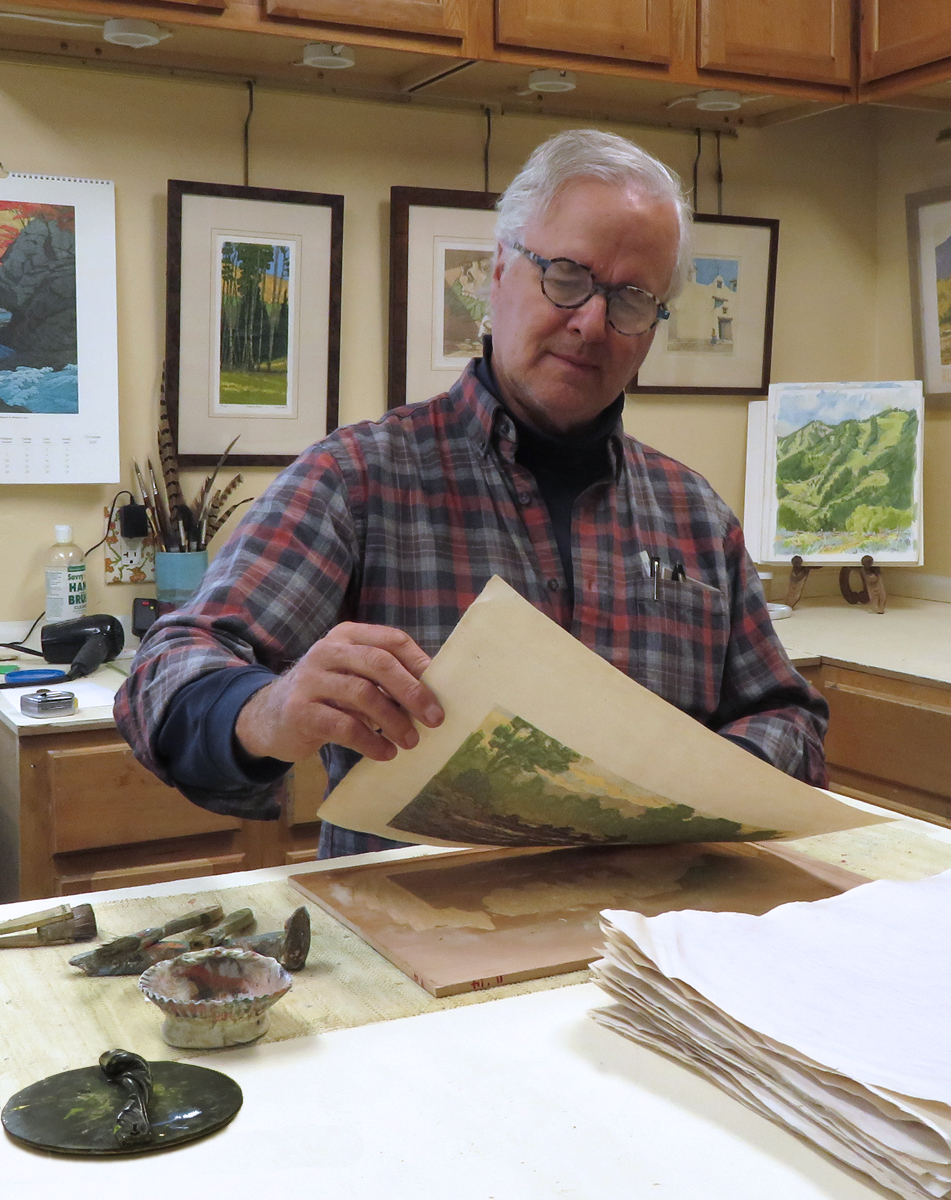Artist Leon Loughridge in collaboration with Ann Korologos Gallery offers an exclusive set of woodblock editions. Aspen Mountain from McLain Flats and Tiger Lily are available for purchase as framed and unframed works. Influenced heavily by Japanese wood block printing, Leon’s style has been compared to the legendary printmaker Gustave Baumann by collectors.

Leon Loughridge
Aspen Mountain from McLain Flats
Edition of 18
Wood Block Print, 7.5 x 7.5 in
Printed on contemporary Torinko Kozo paper
$225 matted, $450 Framed
Leon Loughridge
Tiger Lily 10/15
Edition of 15
Wood Block Print, 8 x 5 in
Printed on 1910, hand-made kozo paper
$95 matted, $295 Framed

I came across a large collection of Japanese prints in an antique store one day, bought them all, and then slowly became lost in the study of their process and history. I had always been attracted to Japanese prints, knowing the printing process was different than that of the oil-based ink and roller that I was accustomed to. The more I learned about the process, the more I moved away from traditional Western style relief printing.
There is an efficiency of line and shape in Japanese prints, and the process uses the simplest tools and mediums. The press is a small hand-held disk. Pressure is controlled by the texture on the disk and by gentile hand pressure. The ink is a simple mix of paste and pigment. Ink is applied with a squarish brush of hog or deer hair. There are just as many variables to the Japanese process as in the Western style of printing, but Japanese printing is all about touch.
I am physically involved with the control of each step during printing. I can apply ink to a specific area or the entire the block, blend colors to create a gradation or modulate the subtlety of tone. When transferring the image to the paper with the disk or baren, the amount of pressure and the texture of the baren creates different effects. This interaction is like sketching outdoors where there is a direct interaction of translating the mood of a scene onto paper.
I get excited about an idea and want to see it on paper. The Japanese process allows me to print multiple color layers within a day, unlike oil-based inks that need to dry for a day between layers. While printing, I will often see what needs to print next and how to print it. As the image develops with multiple layers of color, I am continually reacting to the image, printing new color layers to create the mood I want to feel.
I wish I could say I have a detailed plan of how an image will print. Sometimes that original concept flows through the process easily producing a clean image. More often, as the image evolves, colors and values need to be adjusted towards the end goal. There is a process of deliberation and action after each color layer has been printed, moving towards the end goal of rendering the mood I want to feel. This is where the creativity of the Japanese process allows a block to be printed multiple times with different techniques to push the image towards that mood.